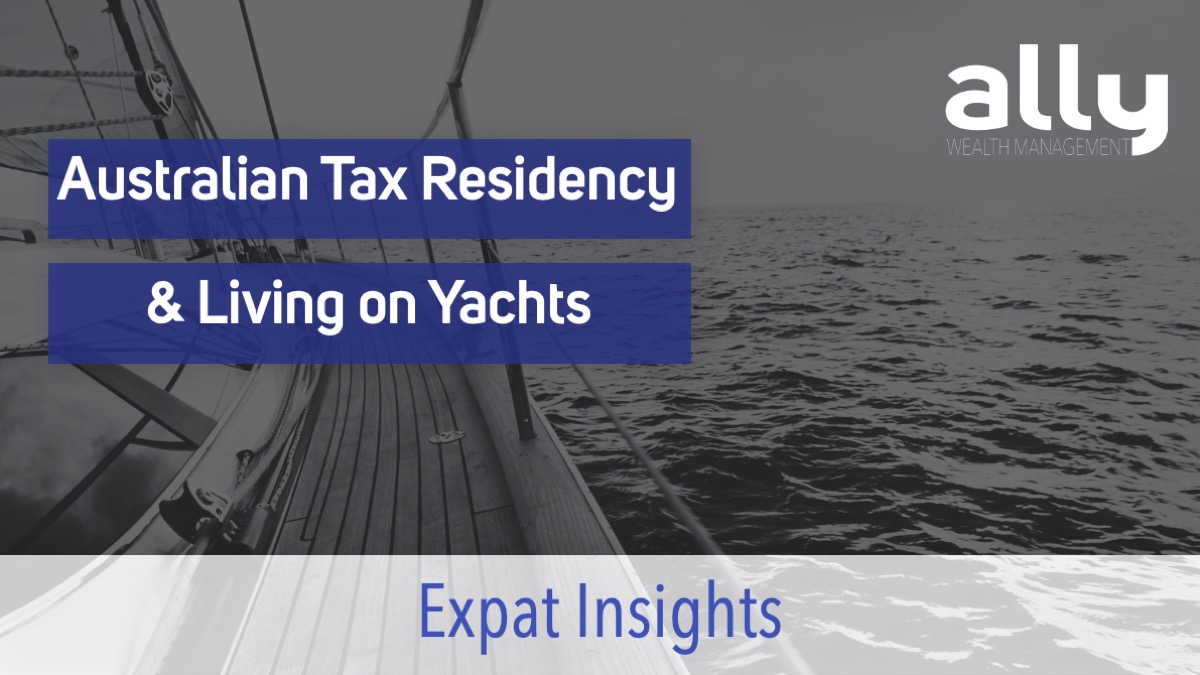Transfer Your UK Pension to Australia – Everything a UK Expat Needs to Know
As an expat, managing your finances can be a complex task, especially when it comes to pension planning. If you’re a UK expat considering a move to Australia, or even if you’re a UK expat who’s already made the move to the sunny shores of Australia, understanding how to handle your pension can be crucial.
This blog post aims to provide you with a comprehensive guide on transferring your UK pension to Australia, the benefits, the process, and potential pitfalls to avoid.
Why Transfer Your UK Pension to Australia?
Transferring your UK pension to Australia can offer several benefits. Firstly, you can benefit from more favourable tax treatment than what’s on offer in the UK. Australia’s superannuation system allows for tax-free withdrawals once you turn 60, which can provide significant tax efficiency.
Secondly, transferring your pension can help you avoid currency risk. Currency fluctuations between GBP and AUD could reduce the value of your pension if left in the UK. By transferring to an Australian super fund, your money can be held entirely in AUD, mitigating this risk. Whilst currencies can both appreciate and depreciate, for most retirees, this level of volatility and risk is unnecessary.
Lastly, consolidating your funds under a single arrangement can simplify your financial management. Having all your retirement funds in one place can make it easier to manage and monitor your savings. This can also be highly relevant when it comes to your estate planning, in ensuring that your assets can be seamlessly managed and distributed as per your wishes.
Understanding the UK Pension System
A UK pension is a retirement fund that you can draw on once you reach the state pension age. It consists of money contributed by employers and employees, as well as any investment returns generated over time. The types of pensions that can be transferred include personal and workplace pensions. However, certain state pension plans and annuities are not eligible for transfer.
One of the key stark differences to the Australian superannuation system is that the UK pensions are tax-free during accumulation, or working phase, and are taxable upon withdrawal by retirees in the UK. In Australia, however, tax is paid during accumulation phase, and the withdrawals via an Account-Based Pension are tax free.
The UK pension system is a complex structure with several types of pensions, each with its own rules and tax implications. Here’s a brief overview:
- State Pension: This is a regular payment from the UK government that you can claim when you reach State Pension age. The amount you get depends on your National Insurance record. The State Pension is taxable, and the amount of tax you pay depends on your total income for the year.
- Workplace Pensions: These are set up by employers to provide their employees with retirement benefits. They are typically ‘defined contribution’ pensions, meaning the amount you get when you retire depends on how much has been paid in and how well the investment has performed. The money you put into a workplace pension is taken from your salary before tax, so it’s tax-efficient.
- Personal Pensions: These are pensions that you arrange yourself. They work in a similar way to workplace pensions, but are suitable for those who are self-employed or whose employer doesn’t offer a pension scheme. Contributions to personal pensions also get tax relief.
- Defined Benefit Pensions: These are a type of workplace pension, often referred to as ‘final salary’ or ‘career average’ pensions. The amount you get at retirement is based on your salary and how long you’ve worked for your employer. They are less common these days but are still offered by some employers. In many cases, it isn’t a wise move to transfer out a Defined Benefit Pension given the lucrative nature of many of these plans, however it is important to consider such risks here as the provider itself, the payment criteria, tax treatment of the income, and lump sum withdrawal options.
When it comes to taxation, pensions in the UK are subject to income tax. The tax-free Personal Allowance applies to pension income, which for the tax year 2023/24 is £12,570. This means you can receive up to this amount across all your income, including the State Pension, occupational pensions, personal pensions, and other income (like from investments), without paying tax.
Understanding the Australian Superannuation System
The Australian Superannuation system is a government-initiated program in Australia that assists people in saving for their retirement. The key benefits of this system include tax-effective savings and investment opportunities. Unlike the UK system, the Australian Superannuation system allows for tax-free withdrawals once you turn 60.
The Australian superannuation system is a mandatory retirement saving scheme for all Australians in employment. Here is a look at some of the key features of the Australian superannuation system.
- Employer contributions: In Australia, employers are required by law to make superannuation contributions on behalf of their employees. This is called the Superannuation Guarantee (SG), which as of 2023 is 11% of an employee’s regular wage but is set to gradually increase to 12% by 2025.
- Voluntary contributions: In addition to the compulsory employer contributions, individuals can also make voluntary contributions to their superannuation fund. These contributions can either be made from pre-tax salary (known as “concessional contributions”) or from after-tax income (“non-concessional contributions”).
- Investment and tax: The superannuation funds then invest these contributions across various asset classes like shares, property, fixed interest, and cash. The earnings from these investments are taxed at a concessional rate of 15%, or 10% whereby the assets are held beyond a 12 month period. The investment selection can often be guided, directed and even managed by your Financial Adviser.
- Accessing super: Typically, you can access the money in your super fund once you reach your “preservation age” and retire, which is between 55 and 60 years old, depending on when you were born. Under certain conditions, early access to super may be permitted.
Eligibility Criteria for Pension Transfer
To transfer your UK pension to Australia, you must meet certain criteria. Your pension pot in most cases must be at least £20k, and your pension must qualify under HMRC regulations. It’s also important to ensure that your chosen Australian schemes meet HMRC’s requirements before proceeding with any transfers.
Let’s have a more in-depth look at some of the key eligibility criteria here:
1. Age Restrictions
Under Australian law, you must be at least 55 years old to transfer your UK pension funds. This age limit is set to rise to 57 by 2028 as per the UK legislation. However, there are certain exceptional circumstances where individuals under the age of 55 can also transfer their pension, however these often come with high costs.
2. Recognised Overseas Pension Schemes (ROPS)
For a UK pension to be transferred to Australia, it must be moved to a Qualifying Recognised Overseas Pension Scheme (QROPS). QROPS are overseas pension schemes that meet specific requirements set by Her Majesty’s Revenue and Customs (HMRC) and are eligible to receive transfers from registered pension schemes in the UK. Therefore, you must find an Australian Superannuation fund that is recognised as a QROPS. Your Financial Adviser can assist you in ensuring that the superannuation fund meets the specific requirements.
3. Pension Type
Typically, personal and some types of defined contribution workplace pensions can be transferred to Australia. However, transferring state pensions or some types of defined benefit schemes is usually more challenging due to the guarantees they provide about retirement income. It can often be wise to simply retain defined benefit pensions and retirement accounts in their existing accounts, however it is important to review your options here.
4. Residency
Most Australian Superannuation funds will only accept pension transfers from UK expats who are already residents of Australia, or those who intend to become residents within six months. There are however a few funds that will accept transfers if you intend to migrate within two years.
5. Funds Limit
The Australian non-concessional contributions cap limits the amount you can transfer into your Superannuation fund per year. As of July 2023, the cap is set at A$110,000 or up to A$330,000 brought forward for 3 years. However, you should verify these numbers as they might have changed.
Remember, the eligibility criteria can be complex, and regulations often change. Therefore, before making any decisions, it’s recommended that you seek professional advice. Consider speaking to a financial advisor who specialises in pension transfers to ensure you meet all the necessary requirements and avoid potential financial pitfalls.
The Transfer Process: Step-by-Step Guide
- Evaluation and advice from a financial advisor: This is a crucial first step. A financial adviser can provide you with personalised advice based on your financial situation and goals.
- Identifying a suitable Australian superannuation fund: You need to find a superannuation fund that meets HMRC’s requirements for QROPS (Qualifying Recognised Overseas Pension Scheme).
- Arranging the transfer from the UK: The process of transferring your UK pension funds can take up to six months, depending on the scheme you’re transferring from. You will need to complete an application form and provide evidence of your identity and address in both countries.
- Understanding tax implications: Depending on where you’re moving from in the UK and what type of pension you have, there may be different tax implications associated with transferring it abroad. It’s important that you seek professional advice about this before making any decisions.
Common Pitfalls and How to Avoid Them
Transferring a UK pension to Australia is a complex process and there can be potential pitfalls. These include not meeting the eligibility requirements, facing unexpected tax implications, and choosing an unsuitable Australian superannuation fund. To avoid these issues, it’s crucial to do thorough research, seek professional advice, and ensure you fully understand the implications of transferring your pension.
Next Steps
The decision to transfer your UK pension to an Australian Superannuation fund is a significant financial move and can be a complex process filled with legalities and financial implications. However, it’s a decision that can offer numerous benefits, including tax advantages and consolidating your retirement savings in one place – your new home in Australia.
To summarise, understanding the UK pension and Australian Superannuation systems, meeting the eligibility requirements for pension transfer, and comprehending the tax implications are key steps to a successful pension transfer. Also, identifying a Qualifying Recognised Overseas Pension Scheme (QROPS) for the transfer and avoiding common pitfalls can make the process smoother and more effective.
It’s essential to remember that each individual’s financial situation and needs are unique, and what works best for one person may not be the best solution for another. Therefore, professional advice is invaluable in these situations. Engaging with a Financial Adviser who specialises in UK-Australian pension transfers can help you navigate the complexities of the process and make informed decisions based on your personal circumstances.
Finally, embrace the process as a crucial part of your expat journey. Proper financial planning is an instrumental step towards a comfortable and secure life in Australia. Take this step with as much care, research, and professional guidance as you can, and you will be well on your way to enjoying your new life down under with the peace of mind that your pension is secure and working for you.
Ally Wealth Management is the trusted ally in finance for Australians at home and across the globe. As both Australian expats and residents, the founders of Ally have a unique understanding of the common personal financial challenges faced.
Book your complimentary appointment with our team at Ally Wealth Management to discuss how we can help you to achieve your financial goals.
Ally Wealth Management Pty Ltd is a Corporate Authorised Representative of Sentry Advice Pty Ltd ABN 77 103 642 888. Sentry Advice holds an Australian Financial Services Licence (AFSL) No. 227 748.
General Advice Warning: The information contained herein is of a general nature only and does not constitute personal advice. You should not act on any recommendation without considering your personal needs, circumstances, and objectives. We recommend you obtain professional financial advice specific to your circumstances.




